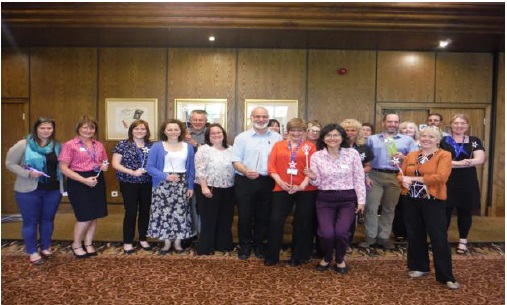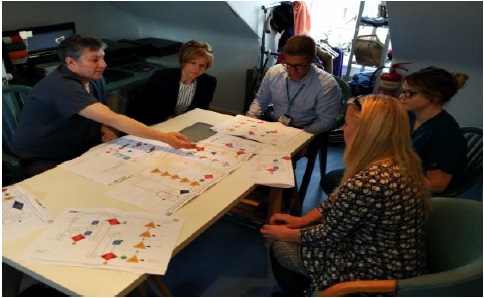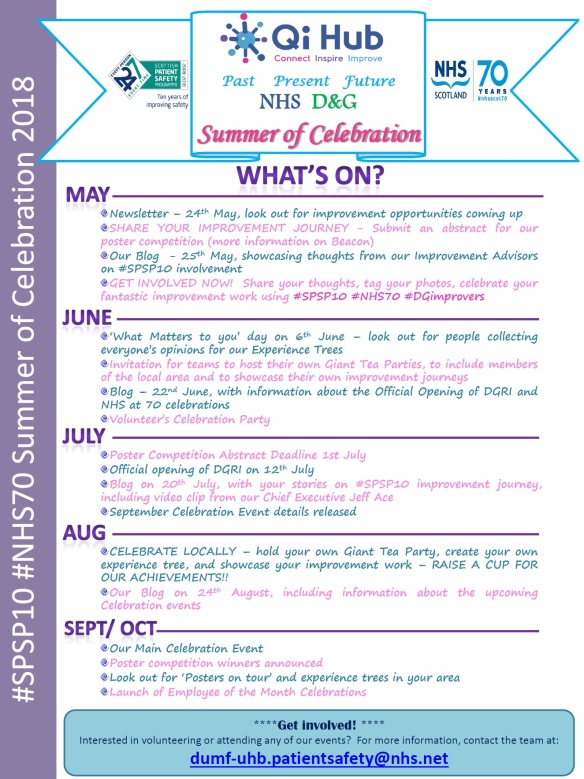
Reflections from Improvement Advisor, Paul Sammons
As an improvement advisor with no clinical background, I work closely with people who want to change things for the better, and who know their teams and roles well, but who don’t always have the skills to structure improvement work. They may not have the capability to use the ‘model for improvement’ – a proven methodology that helps focus aims, identify change ideas and to measure what difference if any, a change actually makes. Having completed the Scottish Improvement Leader programme (ScIL) in 2015/16 I do have that capability which, when brought together with practitioners who have a will and an urgency to change things for the better, can be very powerful. I enjoy the privilege of working alongside, enabling, and learning from some fantastic individuals and teams who strive to improve services of their patients and service users.
Some of these moments will be with me forever – I recall working with Dr. Grecy Bell to motivate and enthuse a group of primary care staff about Medicines Reconciliation – not the most lively of topics, but Grecy created the ‘med rec fairy’ concept – a local champion in each GP practice who would carry the ‘wand’ to ensure their team saw med rec as a vital part of their work.

Another great memory for me was working alongside Dr. Mark Colwell – we teamed up to lead a local dental improvement collaborative, creating a structure around better decision making and treatment planning for patients on high risk medication. Mark showed me how ceding power to his team enabled a flat hierarchy where all team members were able to critically observe each other’s practices, and contribute towards a more collaborative approach to patient care. With the practices involved we improved much – starting even before patients arrived for their appointments – maximising the use of text messaging, moving through the patient’s journey. The work involved reception staff to engage with patients to obtain highest quality patient histories, and enabling dental nurses to observe and to prompt their bosses into even better patient conversations.

I have observed people in health and social care who once invigorated with a little QI magic, will stop at nothing to deliver better care, and who seem to have the energy to drive improvement forward in the most unlikely circumstances. I spend time with Julia Hutchison in DG Smile dental practice, and I leave with a real spring in my step. What is it about these people and all of the others that I get to support that is courageous, different and special? I do reflect on a wee video that helps me answer that question. You might like it too. It is available on YouTube and can be viewed here.
I believe that attention to QI capability and capacity is key to improving services, and that we will see this develop through our local ever-expanding network of QI capable practitioners. In the near future we will expand our practitioner level QI education and training – to ensure managers and leaders are well equipped to support, coach and supervise improvement projects. In 2018/19 I plan to focus improvement efforts into the Women’s and Children’s teams as they settle into their new DGRI home. I contribute to the improvement force field that is growing stronger across Dumfries and Galloway in health care and in social care. I work as part of a small but wonderful team of hand-picked curious and quirky individuals – who quietly and tirelessly support each other, creating a synergy of support to our customers. Perhaps you are close to that growing network of improvers – perhaps you feel the force like I do? Well I do, and as I work with a widening spectrum of fabulous people I can honestly say that there is much joy in my work. Long may it continue…











